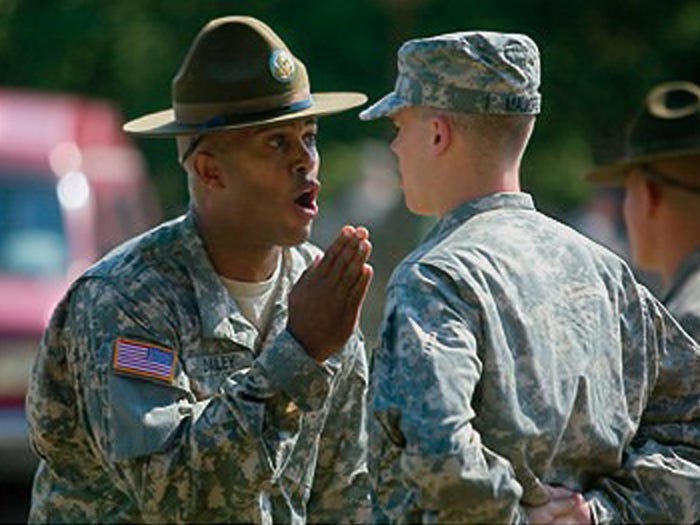For our August Round Robin Blog we are discussing what elements do we include in our stories to
make a story seem and feel more realistic to the reader?
ZZZZ
 When Jules Verne wrote 20 Leagues Under the Sea I’m guessing that nothing felt real about that story to the people at the dawn of the last century. Submarines were a very primitive thing at the time, yet Verne describes things that are standard on today’s amazing underwater vessels. A true visionary, Verne foresaw the skyscraper, the submarine, and the airplane, and is now regarded as one of the fathers of science fiction. I imagine it is just as much of a challenge for today’s science fiction and fantasy writers to create places, things and people that don’t yet exist and make them real.
When Jules Verne wrote 20 Leagues Under the Sea I’m guessing that nothing felt real about that story to the people at the dawn of the last century. Submarines were a very primitive thing at the time, yet Verne describes things that are standard on today’s amazing underwater vessels. A true visionary, Verne foresaw the skyscraper, the submarine, and the airplane, and is now regarded as one of the fathers of science fiction. I imagine it is just as much of a challenge for today’s science fiction and fantasy writers to create places, things and people that don’t yet exist and make them real.
But for me, with one exception, all my books are contemporary, so I don’t have to create whole new worlds. I just have to be an observant of the world around me and pay attention to current events.
ZZ
But for me, with one exception, all my books are contemporary, so I don’t have to create whole new worlds. I just have to be observant of the world around me and pay attention to current events.
ZZ
 One of the things writers are always told to keep in mind are the five senses: Sight, sound, touch, smell, and taste. When an author incorporates these senses into their writing, they can pull the reader into the scene. For instance: "The acrid stench of burnt flesh seared my nose" – might not be something we have all actually smelled, but we can imagine it because of the descriptive words used. Other more familiar odors can put the reader right into the scene - like the smell of fresh rain steaming on hot tarmac, or the delightful scent of steaks on the barbeque. The antiseptic smell of a hospital corridor, or the diesel fumes of a truck passing by.
One of the things writers are always told to keep in mind are the five senses: Sight, sound, touch, smell, and taste. When an author incorporates these senses into their writing, they can pull the reader into the scene. For instance: "The acrid stench of burnt flesh seared my nose" – might not be something we have all actually smelled, but we can imagine it because of the descriptive words used. Other more familiar odors can put the reader right into the scene - like the smell of fresh rain steaming on hot tarmac, or the delightful scent of steaks on the barbeque. The antiseptic smell of a hospital corridor, or the diesel fumes of a truck passing by.
ZZ
 Then there’s touch and things we can feel: The cleansing, muscle relaxing feel of a hot shower, the exciting touch of a lover, the inviting softness of a puppy’s fur. Or overpowering heat that has sweat dripping down the character’s back, or cold so chilly that their head aches with it. The gritty discomfort of walking barefoot over gravel strewn pavement, the brain-splitting throb of a headache.
Then there’s touch and things we can feel: The cleansing, muscle relaxing feel of a hot shower, the exciting touch of a lover, the inviting softness of a puppy’s fur. Or overpowering heat that has sweat dripping down the character’s back, or cold so chilly that their head aches with it. The gritty discomfort of walking barefoot over gravel strewn pavement, the brain-splitting throb of a headache.
ZZ
 One can include sights that we’ve all experienced to make a scene real. The endless river of red taillights parading over the next hill of the highway, waves curling up and crashing down in a froth of white foam. Describe a little kid with a chocolate ice cream cone dripping down over his fat little fist and onto his clothes and you can almost taste the smooth, cocoa flavored ice cream itself.
One can include sights that we’ve all experienced to make a scene real. The endless river of red taillights parading over the next hill of the highway, waves curling up and crashing down in a froth of white foam. Describe a little kid with a chocolate ice cream cone dripping down over his fat little fist and onto his clothes and you can almost taste the smooth, cocoa flavored ice cream itself.
ZZ
 Which brings us to taste. Back to that steak on the grill – savor the juicy, smoky flavor of the perfectly cooked steak as you bite into it. Um-um-um! Or the bitter wake-me-up cup of black coffee. Instead of just telling the reader that the kid sucked on the lemon, describe the throat tightening, eye-watering, face scrunching effect. The reader will be puckering up with the kid.
Which brings us to taste. Back to that steak on the grill – savor the juicy, smoky flavor of the perfectly cooked steak as you bite into it. Um-um-um! Or the bitter wake-me-up cup of black coffee. Instead of just telling the reader that the kid sucked on the lemon, describe the throat tightening, eye-watering, face scrunching effect. The reader will be puckering up with the kid.
ZZ
And lastly there is hearing. The bleat of horns in that endless traffic jam, or the plop of fat raindrops landing on foliage as the summer shower begins.  The creepy sound of footsteps following the character down that alley in the dark, the shuffle, the stopping whenever the character stops, signaling the follower is stalking your guy, can send shivers up the readers back. The bleep of monitors in a hospital room can bring on the angst of having someone you love in that bed, tied to all that life-saving equipment.
The creepy sound of footsteps following the character down that alley in the dark, the shuffle, the stopping whenever the character stops, signaling the follower is stalking your guy, can send shivers up the readers back. The bleep of monitors in a hospital room can bring on the angst of having someone you love in that bed, tied to all that life-saving equipment.
ZZ
All these are everyday senses most of us have experienced or can easily imagine so paint the picture – a full rainbow of color, sound, taste, smell and feel.
ZZ
 Now, how do we make the characters themselves feel real? Show your reader how they move, how they speak, how they dress and act. Unless you’re deliberately creating an eccentric, keep it real. If you plan to have a teenager in your story, spend some time listening to them speak. Watch how they move with the awkward gangly, haven’t-grown-into-their new bigger bodies lack of grace. Same goes for a toddler struggling to stay upright as they lurch toward something they want. Or a very old person shuffling down the walk pushing their walker with green tennis balls on the legs. A soldier moves with purpose, a woman on the hunt with swaying hips.
Now, how do we make the characters themselves feel real? Show your reader how they move, how they speak, how they dress and act. Unless you’re deliberately creating an eccentric, keep it real. If you plan to have a teenager in your story, spend some time listening to them speak. Watch how they move with the awkward gangly, haven’t-grown-into-their new bigger bodies lack of grace. Same goes for a toddler struggling to stay upright as they lurch toward something they want. Or a very old person shuffling down the walk pushing their walker with green tennis balls on the legs. A soldier moves with purpose, a woman on the hunt with swaying hips.
ZZ
 Dialog is equally important. If you plan to have a soldier or a sailor in your story, unless he or she is Frank Burns or Gomer Pyle, they are not likely to use expressions like golly gee willikers. Use dialog that fits the character. A five-year-old will not speak like a ten-year-old. A teenager has a vocabulary all their own and a drill sergeant will cuss. (If you don’t want to use actual cuss words, at least let the reader know the character cussed.) Men tend to speak in short, direct sentences while women weave in all kinds of additional information, some of it quite irrelevant. If you’re at the grocery store waiting in line watch how a harried mother deals with a fractious child who’s been told no about the candy display. Everywhere you go there are people who speak and act differently than you would so be a people watcher, take notes – mental or for real – and use these ideas for the characters in your books. So, how a character moves, how they speak and how they think help to make the story real.
Dialog is equally important. If you plan to have a soldier or a sailor in your story, unless he or she is Frank Burns or Gomer Pyle, they are not likely to use expressions like golly gee willikers. Use dialog that fits the character. A five-year-old will not speak like a ten-year-old. A teenager has a vocabulary all their own and a drill sergeant will cuss. (If you don’t want to use actual cuss words, at least let the reader know the character cussed.) Men tend to speak in short, direct sentences while women weave in all kinds of additional information, some of it quite irrelevant. If you’re at the grocery store waiting in line watch how a harried mother deals with a fractious child who’s been told no about the candy display. Everywhere you go there are people who speak and act differently than you would so be a people watcher, take notes – mental or for real – and use these ideas for the characters in your books. So, how a character moves, how they speak and how they think help to make the story real.
ZZ
 If you’re a woman writing a male character, I suggest you read books written by men with strong male protagonists and pay attention to the way they think because you want to be real when you’re in your hero’s head. Same goes for a man writing a female character. And one last comment here – no one is all BAD or all GOOD. Make sure your characters have flaws and hang-ups. Even the mafia hit-man loves his mother and the devoted father can flip out when his kids don’t do their chores. A law enforcement officer might be an extraordinary individual physically, but give them an emotional hang-up. Something from their past that haunts them and could influence the decisions he or she makes. Susie is the most generous, caring person in the world, but she’s annoyingly OCD. Flaws make our characters human and thus, real.
If you’re a woman writing a male character, I suggest you read books written by men with strong male protagonists and pay attention to the way they think because you want to be real when you’re in your hero’s head. Same goes for a man writing a female character. And one last comment here – no one is all BAD or all GOOD. Make sure your characters have flaws and hang-ups. Even the mafia hit-man loves his mother and the devoted father can flip out when his kids don’t do their chores. A law enforcement officer might be an extraordinary individual physically, but give them an emotional hang-up. Something from their past that haunts them and could influence the decisions he or she makes. Susie is the most generous, caring person in the world, but she’s annoyingly OCD. Flaws make our characters human and thus, real.
ZZ
 And my last tip here is current events. If you are writing contemporary, pay attention to what’s going on in the world around you. Everyone loves the Christmas Hallmark movies, but let’s get real, they are a little over the top with touchy feely stuff and the troubles of our world rarely intrude. If you want your story to be real, include the things that everyone is experiencing, things on the front page of papers, things on social media. If anyone writes a book set in 2020 and there is no mention of protests, violence, targeting cops, Covid 19, masks, or the upcoming election and all the grief these things have heaped on us, then the story just won’t feel
And my last tip here is current events. If you are writing contemporary, pay attention to what’s going on in the world around you. Everyone loves the Christmas Hallmark movies, but let’s get real, they are a little over the top with touchy feely stuff and the troubles of our world rarely intrude. If you want your story to be real, include the things that everyone is experiencing, things on the front page of papers, things on social media. If anyone writes a book set in 2020 and there is no mention of protests, violence, targeting cops, Covid 19, masks, or the upcoming election and all the grief these things have heaped on us, then the story just won’t feel  real. Set a story in Florida in the late summer or early fall with no mention of a hurricane churning in the gulf - it won’t seem real. If you’re setting a scene in a grocery store and never notice the masks or the directions on where to stand, it won’t feel like 2020. If you are driving down the street in October of an election year there will be political posters everywhere. So, include them. They make the scene real, and add depth and color to your trip to the store. Some signs might get the character’s dander up, or just make them shake their head at the absurdity of it all, but either way, it helps the reader to relate to the character.
real. Set a story in Florida in the late summer or early fall with no mention of a hurricane churning in the gulf - it won’t seem real. If you’re setting a scene in a grocery store and never notice the masks or the directions on where to stand, it won’t feel like 2020. If you are driving down the street in October of an election year there will be political posters everywhere. So, include them. They make the scene real, and add depth and color to your trip to the store. Some signs might get the character’s dander up, or just make them shake their head at the absurdity of it all, but either way, it helps the reader to relate to the character.
ZZ
 If a writer incorporates things everyone, or most everyone has experienced, then the reader is right there in the scene, feeling it, hearing it, smelling it, touching it and feeling like It’s real. You’ve had clammy hands when you’ve been nervous. You’ve felt the frustration of that traffic jam. And you’ve cussed when pushed to the breaking point. So you can relate to the character who experiences these things. I leave you with one final caution – SHOW don’t tell. If you tell the reader that the kid was crying hard that doesn’t bring the same visceral response that “The boy’s chest heaved with anguish and fat tears ran down his face, leaving wet trails” does.
If a writer incorporates things everyone, or most everyone has experienced, then the reader is right there in the scene, feeling it, hearing it, smelling it, touching it and feeling like It’s real. You’ve had clammy hands when you’ve been nervous. You’ve felt the frustration of that traffic jam. And you’ve cussed when pushed to the breaking point. So you can relate to the character who experiences these things. I leave you with one final caution – SHOW don’t tell. If you tell the reader that the kid was crying hard that doesn’t bring the same visceral response that “The boy’s chest heaved with anguish and fat tears ran down his face, leaving wet trails” does.
ZZ
 So, enough of my thoughts – lets go see what these other Round Robin Bloggers have to offer to make their writing seem real.
So, enough of my thoughts – lets go see what these other Round Robin Bloggers have to offer to make their writing seem real.
Connie VinesZ
Victoria Chatham
Judith Copek
Diane Bator
Dr. Bob Rich
Beverley Bateman
Fiona McGier
Rhobin L Courtright